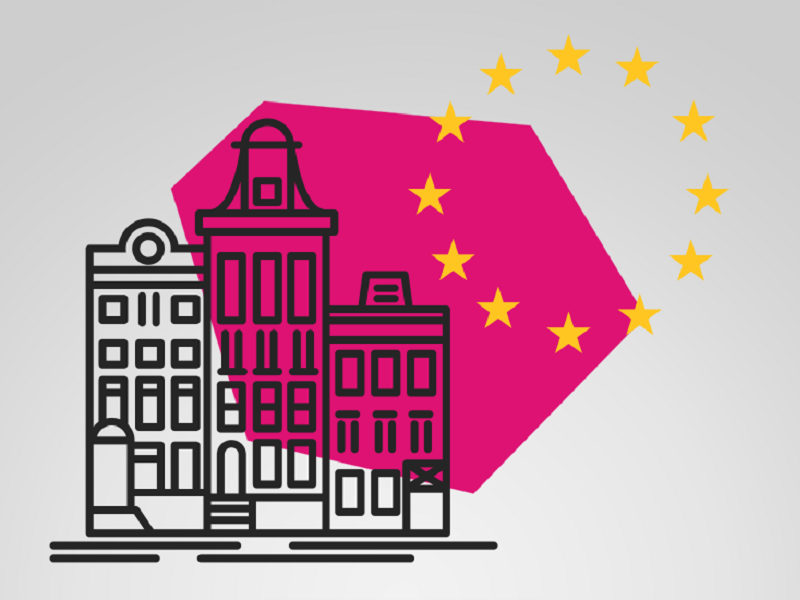
Jorge Cerveira Pinto: “There are no recipes for what countries need to do. You can only learn by doing”
- What economic and social benefits can design bring to Ukraine?
Design innovation has been shown to bring many benefits to companies, states and citizens. Several studies have shown for example, that design innovation allows companies to be more competitive, to export more, generate higher sales and profits and in this way increase employment. In other situations, public services have used design innovation to conceive new services, to involve citizens in these processes and in this way, create meaningful services that truly address what citizens expect and need. Also design innovation can be used to address social problems and in this way generate new solutions and guarantee the participation of the various relevant stakeholders. Governments, municipalities and regions are also using design innovation to help them define new better policies, that have the various stakeholders actively involved. So design innovation allows you to do more with less and above all, to do what is really valued by those that have an interest.
- What design models can work and be successful in Ukrainian realities? And how we can implement them?
There are no recipes for what countries need to do. Design innovation is a process that has to be implemented and in itself encompasses a “trial and error” approach. You can only learn by doing. In some countries, design innovation is considered so relevant that they have policies to support its development. Others, don’t see the need for it; they prefer to focus on considering design as one type of innovation, as relevant as any other type of innovation and therefore ensure that design-led projects are funded in the same way as any other type of project/innovation. Public services need to experiment with design-led projects and decision-makers need to learn what design-led innovation is. You also need, to have designers with the right skills and competences to work with companies, public services and citizens. You need to disseminate what design is, when it can be useful, for what, and this is a long term effort. You have to change the mind set of politicians, entrepreneurs, public servants, educators and citizens on how to use design tools and skills to deal with the current societal needs. So the best model is the one you will develop once you embark on this journey. Of course you should look for good benchmarking at the international level, but then consider what makes sense in your own reality.
- Can you give us 3 successful examples of design/design thinking projects?
Nowadays we can find design-led project in almost all human activities. When we define design as a “way of thinking” then we can say that a “design approach” can be useful in virtually all situations. Most people still think of design as “making beautiful products”, but this aesthetic dimension, although still relevant, does not explain the relevance of design in the development of social services, in the use of design at policy level or the success that design-led approaches have in the conception of new internet services and products. Also design is helping companies and public services to re-thinking the way they deliver their services, create new products or the way we plan and use public and private space, for example in our cities. For example, in 2015, during the Expo Milano, several activities were organized around the general theme of design-driven innovation in the food industry, how can we deal better with the current food challenges the world faces; the Estonian government is a world leader in the use of design to re-think the way public services are delivered to citizens and this has a tremendous positive impact in terms of Estonia’ competitiveness; many new hospitals and health centres around the world are being re-designed with the involvement of patients, health professionals and citizens to create services, products and processes that place their needs in the centre of the decision-making processes; politicians are re-thinking the way they engage citizens in the political processes and this is generating new types of policies, empowering communities and citizens; SMEs all over the world are re-conceiving their production processes and even the nature of their business using design-thinking approaches and this has huge impacts in terms of investment, exports and job creation… so there are endless excellent design-led’ projects in all areas of human activity, from small and individual to huge, national and multi-national projects.
----
Jorge Cerveira Pinto is invited expert and consultant in several EU programmes and institutions. Currently Research Development Executive (University of Coventry), European Union expert and advisor (H2020, Creative Europe, Cosme and Interreg). As consultant has worked in many innovation programs in Europe, including Design for Europe and European Makers Space and with many international companies in the field of design, tourism and culture.
He has been working since 1990 with the European Union Institutions and other International organizations based in Brussels, in the development of international projects and partnerships.
Since 1995, has worked as Accredited Lobbyist to the European Parliament. He has been registered has professional consultant, In-house lobbyists and trade/professional association representative and non-governmental organisations, platforms and networks and similar representative.
Academically, he is invited professor in several universities in the field of innovation and marketing.
Main sectors of experience: Programme and Project Management; Monitoring and Evaluation; Public Sector Reforms, Results Based Management and Performance Management; Public sector capacity building; Strategy and Planning; Governance and accountability; Private Sector Development Small and Medium Enterprises; Business Development Services and Entrepreneurship; Trade; Culture; Youth and education; Urbanisation.
He is board member in several not-for-profit associations and foundations.




